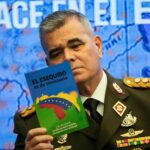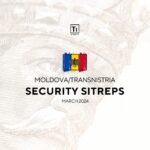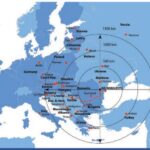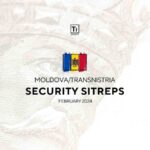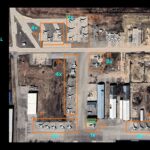President Trump has announced a swift withdrawal of the 2,200 U.S. troops active in northeastern Syria, after claiming victory over Da’esh. The troops largely consist of special operations units, special forces, engineers, state department personnel and forward air traffic controllers supporting the Kurdish-led Syrian Democratic Forces (SDF). Trump’s decision was made without allied or cabinet consultation and was likely part of a deal with Turkey. While the troop withdrawal will negatively impact the counter-Da’esh campaign, it will potentially reinvigorate the U.S.-Turkish partnership. The decision is faithful to Trump’s original foreign policy views and shows the limits of John Bolton’s influence in the National Security Council (NSC). The resignation of Defense Secretary James Mattis suggests that the decision is irreversible at this point.
KEY POINTS:
1. With the troop withdrawal, the Trump administration returns to its original foreign policy rhetoric, abandoning regime change objectives and long-term engagements in the Middle East.
2. While the Trump administration did accelerate the counter-Da’esh campaign, the premature troop withdrawal provides the terror group with breathing room to regroup and potentially resurge.
3. As the U.S failed to prevent the formation of Iran’s ‘Shia Crescent’ land bridge in December 2017, the troop withdrawal will not significantly affect Washington’s counter-Iran posture in northeastern Syria and al-Tanf. Israel and the Gulf states will be forced to pick up the ball to contest Iranian influence in Syria.
4. The troop withdrawal has the potential to reinvigorate the U.S.-Turkish strategic partnership and gradually pull Turkey out of Russia’s orbit. The SDF will likely disintegrate and forge new alliances to prevent a third party takeover of the territory it has liberated.
5. The Trump administration has also ordered troop reductions in Africa and Afghanistan, significantly weakening the U.S.’ capacity to combat al-Qa’ida and Da’esh internationally.
1. THE SYRIAN CIVIL WAR
- Under the Trump administration, the United States canceled the Central Intelligence Agency’s (CIA) train & assist program for Syrian opposition groups and focused exclusively on defeating Da’esh. This crippled the United States ability to influence the political resolution of the conflict. The U.S-sponsored Geneva Process remains insignificant and is overshadowed by the Russian-Turkish-Iranian trilateral formats.
- According to James Jeffrey, the U.S. Special Representative for the Syria Engagement, the Washington now seeks a “changed regime” (i.e. behaviour) rather than “regime change” in Damascus.
- President Trump first expressed his intention to withdraw the 2,200 U.S. troops in northeastern Syria in 2017, in accordance with his campaign promise of military disengagement. The withdrawal was postponed at the NSC’s advice, which emphasized the need to stabilize the liberated territory in Syria and Iraq.
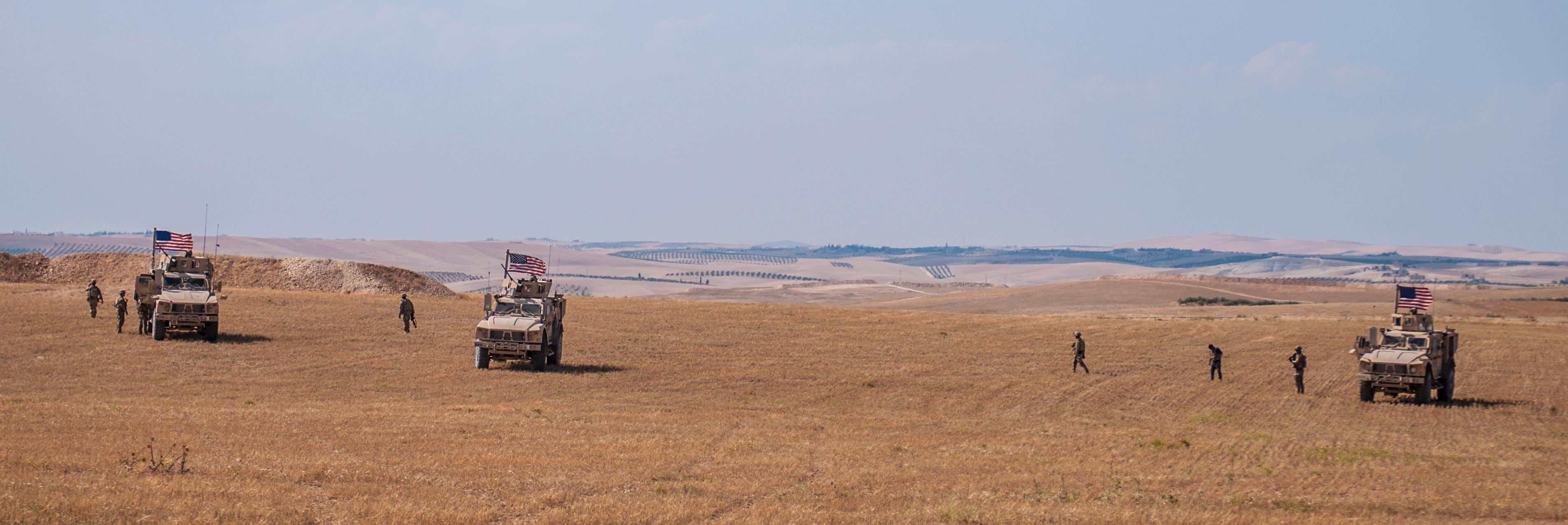
US Forces dismount from their Oshkosh M-ATV tactical vehicles while conducting a security patrol outside Manbij, Syria, June 24, 2018. Image: US Army/Staff Sgt. Timothy R. Koster
2. THE GLOBAL COALITION AGAINST DA’ESH
- According to the U.S. government, the Coalition is currently transitioning to the next phase of the campaign against Da’esh. This will likely entail the end of major operations, including the air campaign, and the demobilization of the U.S. Combined Joint Task Force Inherent Resolve (CJTF-IF). Without CJTF-IF, French and British SOF and close air support missions will have a negligible impact on Da’esh.
- Since 2014, the Global Coalition has made significant progress against Da’esh in Syria and Iraq. The Trump administration’s relaxation of the rules of engagement and the discrete troop surge in 2017 have notably accelerated the counter-Da’esh campaign. Da’esh has been stripped off its expansive proto-state and forced back into the form of a classical insurgency.
- However, Da’esh is conserving its resources and regrouping in the mid-Euphrates river valley (MERV) in Syria as well as the southern Nineveh and Kirkuk provinces in Iraq. Between 8,000 and 25,000 Da’esh fighters remain scattered throughout Syria and Iraq, awaiting a re-surge opportunity. Da’esh thus remains capable of threatening regional stability and Transatlantic security.

Visual comparing the territory held by Da’esh in 2015 and December 2018.
- Post-liberation stabilization efforts, which focus on local force capacity building, will remain crucial for preventing the resurgence of Da’esh. The SDF will require additional training missions to raise an adequate number of indigenous Arab Sunni troops that can stabilize and police the MERV. According to the Joint Chief of Staff Joseph Dunford, the SDF currently lacks 30,000 men in the MERV area, a likely hotspot for Da’esh’s comeback.
- President Trump seems to rely on the pro-governmental camp to fill the vacuum, rebuild the area and contain Da’esh in MERV. It is however highly unlikely that the Assad government and Iranian forces will be able to effectively stabilize the region.
- The only viable – yet unlikely – option is for France, the United Kingdom and other Coalition members to increase their troop presence and fill the security void created by the U.S. pullout. There is hope that some of the U.S. forces will be re-deployed to the border city of al-Qa’im on the Iraqi side. This would allow them to conduct cross-border special operations into Syria, augmented by CIA drone strikes.
3. COUNTERING IRAN
- Since the pro-governmental victory over Da’esh in Al Bukamal, the Iranian Revolutionary Guards Corps (IRGC) commands an uninterrupted land corridor, nicknamed “Shia Crescent”, which links Iran to Lebanon via Iraq and Syria. The U.S. presence in Syria has failed to obstruct this corridor.
- The al-Tanf garrison and the 55 km exclusion zone do not effectively counter the “Shia Crescent.” The presence of U.S. and Maghawir al-Thawra forces was intended to provide border security for Jordan, guard the al-Rukban camp, and halt the free flow of Da’esh fighters across the Syrian-Iraqi border. While the U.S.-held positions block the shortest land route from Tehran to Damascus or Beirut, the IRGC can still move forces through the strategic Al Bukamal border crossing.

Iran’s “Shia Crescent” land corridor
- Further countermeasures against the Iranian presence in Syria would bring U.S.-backed elements in direct confrontation with the IRGC or its proxies. Instead, the U.S. will likely pursue its counter-Iran strategy on different battlefields. The withdrawal from Syria will free special operations forces, intelligence agents and forward air traffic controllers for other deployments.
- The U.S. withdrawal will force Israel and the Gulf states to pick up the ball and devise measures against Iran’s growing presence in Syria.
4. TURKEY AND THE SYRIAN KURDS
- As major U.S-backed operations against Da’esh are ending, rebuilding Washington’s strategic partnership with its NATO ally Turkey takes precedence over the protection of the SDF. Sources suggest that President Trump made his decision after a phone call with the Turkish President Erdogan. In addition to the troop withdrawal, the U.S. approved the sale of the MIM-140 Patriot surface-to-air missile system to Ankara in order to stop Turkey from acquiring the Russian S-400 system (SA-21).
- The U.S. troop withdrawal in early 2019 will leave the SDF without a credible force protection against Turkey (in the North) and the pro-governmental camp (in the West). The SDF will only be protected by the small French and British SOF presence in northern Syria, which will remain after the U.S. pullout.
- Turkey aims to destroy the self-proclaimed “Democratic Federation of Northern Syria,” which it perceives to be a covert Kurdish political project. In particular, Turkey aims to degrade the YPG, the SDF’s strongest member and Syrian affiliate of the PKK. Ankara will likely try to topple the SDF’s military city councils in northern Syria and replace them with Islamist opposition groups, mainly consisting of Arab and Turkmen Sunni fighters. Similar to previous operations, the prospective Turkish offensive in northern Syria (Eastern Shield) will be branded as an “intervention against terrorism,” referring to both YPG and Da’esh.
- In the medium to long term, the Kurdish elements within the SDF can be expected to seek a deal with Damascus and cede their territory to the Syrian Arab Republic in exchange for protection. As the territory east of Euphrates holds 90 percent of Syria’s oil reserves, it is critical for Syria’s economic reconstruction.
- The Arab Sunni militias within the SDF will likely diverge on this issue. Some groups might welcome reconciliation with the regime, while others will join the Turkish-backed opposition fronts in Northern Aleppo. The Sunni Arab tribes in MERV represent a wild card, as certain tribes have shown strong anti-Shia and Salafist sentiments, which could drive them back into Da’esh’s hands.
- These likely developments will pit Turkey against the pro-governmental camp. Russia will attempt to mediate the conflict in order to uphold the Astana and Socchi accords. The accords are more vital for Russia than for any other actor, since they formalize Moscow’s “triumph” without demanding additional military resources.

Territorial control in Syria as of December 23, 2018.
5. STRATEGIC OUTLOOK
- Thus far, the plans for U.S. troop reductions are limited to deployments in Africa and the Middle East. The U.S. presence in South Korea and Europe remains unchanged for the moment.
- In the Middle East, the U.S. is not only leaving Syria. President Trump is also withdrawing half of the 14,000 U.S. servicemen in Afghanistan. This withdrawal endangers the survival of the Afghan government and severely incapacitates both Operation Freedom’s Sentinel (against Da’esh Khorasan) and NATO’s Operation Resolute Support (non-combatant/capacity building mission).
- U.S. Congress is also pressuring the Trump administration to cease military activities in Yemen. The Department of Defense has already stopped aerial refueling for Arab Coalition fighter aircraft.
- Information on the fate of the 5,000 U.S. troops in Iraq is still pending. There is reason to believe that a troop reduction has to be expected.
- U.S. AFRICOM will experience a 10 percent troop reduction, directly impacting U.S. counter-terrorism efforts in Sub-Saharan Africa and the Horn region.
by HARM and Gecko
The Syrian border town of al-Bukamal is also known as Abu Kamal
The Kurdistan Workers’ Party (abbreviated as PKK in Turkish) is a Kurdish separatist and Marxist revolutionary insurgent group. The PKK is designated as a terrorist organization by NATO, the European Union and the majority of the United Nations member states.
The U.S. troop withdrawal provides Russia with the opportunity to expand its anti-acess area denial (A2/AD) capabilities across the Euphrates river, further flanking NATO’s southeastern border. This adds credibility and prestige to Russia’s re-expanding military engagement overseas.
Founder of T-Intelligence. OSINT analyst & instructor, with experience in defense intelligence (private sector), armed conflicts, and geopolitical flashpoints.

